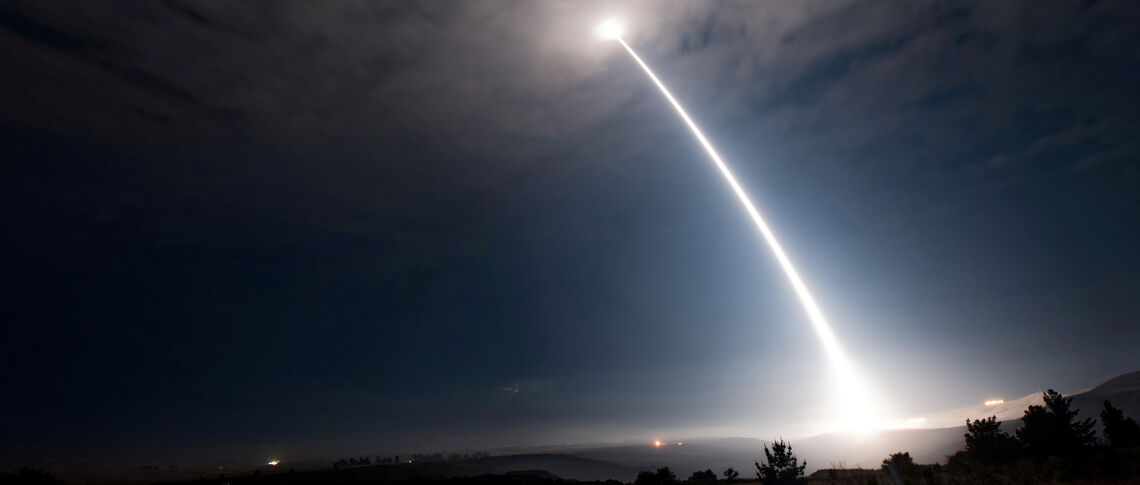The Case for No First Use of Nuclear Weapons
THE CASE FOR NO FIRST USE
Presentation by Professor the Hon Gareth Evans, Chair, Asia Pacific Leadership Network for Nuclear Non-Proliferation and Disarmament (APLN), to GCSP/PNND International Webinar on Is it Time for No First Use Policies in the USA and Globally? on 29 April 2021
___________________________________________________________________________
Given the present nuclear postures of the nine currently nuclear armed states, we have a long way to go in getting universal buy-in to No First Use (NFU) policies. Only China and India currently claim to be committed to NFU. The United States, in its 2018 Nuclear Posture Review, stated clearly that it does not maintain a NFU policy on the grounds that U.S. response options must remain flexible to deter both nuclear and non-nuclear attacks; Russia formally abandoned an earlier pledge in the 1990s; France has long maintained an explicit first-use posture, and the UK, Pakistan and North Korea have not ruled it out; and Israel, as ever, continues to refuse to confirm that it even has nuclear weapons.
No First Use v No Use. In making the case for NFU, we should recognize at the outset that there will always be those in the peace movement for whom any talk of ‘No First Use’ of nuclear weapons is unconscionable. It’s not no first use that we want, they will say, but no use at all, under any circumstances
In principle, this is a compelling argument. But we all have to be honest with ourselves and acknowledge that right now global zero as far away as it has ever been. The Nuclear Weapons Prohibition Treaty has huge moral and emotional appeal, majority UN member support and remains very important in building and reinforcing the normative case against the legitimacy of nuclear weapon. But it has no buy-in whatever in from any of the nuclear armed states or those that think they benefit from their protection, and it won’t have for the foreseeable future, for reasons which are not just ideological, geopolitical, and psychological, but go to verification and, above all, enforcement.
As unpalatable as this will be to some, and as over-cautious as it will be to others, the only way forward, toward a nuclear-weapon free world – in this world as we find it, not what we would want it to be – is incremental, breaking the process into manageable steps. What I believe we should do now, as stated in the report of the International Commission on Nuclear Non-Proliferation and Disarmament, which I co-chaired in 2009, is put our immediate advocacy energy not into an elimination, but rather a “minimization”, or risk reduction agenda, in which No First Use – achieving universal buy-in by the nuclear-armed states to embracing that doctrine – would be one of the four highest priorities.
Those priorities can be summarized as the ‘4 Ds’: the first of them nuclear Doctrine – No First Use; with this declaratory commitment being given practical credibility by De-alerting¸ taking nuclear weapons off high launch-ready alert status; reduced Deployment – drastically downsizing the number of those actively deployed; and Decreased stockpiles – reducing overall numbers to around 2,000, down from the more than 13,000 now in existence. A world that could actually achieve these objectives would still be very far from perfect, but a very much safer one than we live in now.
No First Use v No Limits. The case for NFU – or the less robust but still meaningful ‘sole purpose’ declaration which President Obama tried but failed to get US allies to embrace, and which President Biden still seems to support – rests on two main pillars, that keeping the option of first use is dangerous, and that it is unnecessary.
No Limits Dangerous. Retaining a first use option is dangerous, both for wider global peace and security and often for nuclear-armed states’ own interests, in five main ways:
- A nuclear armed state that keeps open a first-strike option runs the risk of an adversary misreading its intentions and, fearing decapitation, launching a pre-emptive strike of its own, precipitating an otherwise wholly avoidable nuclear war.
- A nuclear-armed state that fears a surprise first-use attack from another which has kept open that option is more likely to put its own forces on extreme launch alert, thereby increasing the risk of human or system error or miscalculation causing a launch which precipitates the very catastrophe it is trying to avert.
- Refusing to adopt NFU encourages vertical nuclear proliferation – incentivising potential adversaries to upgrade their own nuclear forces to deny their opponents a first use advantage, or gain one themselves. That way lies nuclear arms races, with all the multiplication of risk these necessarily involve.
- Refusing to adopt NFU inherently encourages horizontal nuclear proliferation, with all the risks of both deliberate and accidental nuclear exchange that come with adding new nuclear-armed states to the mix – when a state with any kind of conventional capability insists that it needs nuclear weapons to deter or defeat non-nuclear attacks, it necessarily concedes that right to any other country fearing, or claiming to fear, such attack.
- Major-power refusal to embrace NFU can make it harder to wind back breakouts by others actually or apparently under way. Insisting that ‘all options are on the table’, as the Bush administration did with Tehran, clearly played into the hands of Iran’s domestic hardliners and made negotiated nuclear risk reduction much more difficult to achieve. Arguably a clear US NFU policy would also help alleviate at least some of the anxieties currently inhibiting progress on DPRK denuclearization
No Limits Unnecessary. The dangers and risks associated with retaining a first use option are not outweighed by any compelling security necessity, certainly for the major nuclear powers and those non-nuclear states who might believe they shelter under their protection.
- In the case of the major nuclear powers, especially the United States, they have immense conventional firepower, amply sufficient to deter or respond to chemical, biological or other non-nuclear attack
- In the case of US allies, it is also the case that for the indefinitely foreseeable future, US conventional capability will be amply sufficient, when combined with their own capabilities, to protect them against any non-nuclear threat contingency. What they want in these situations is certainly a continuation of US ‘extended deterrence’, on the availability of which some of them will no doubt need to be constantly further reassured, but that simply does not have to be extended nuclear
- In the case of smaller nuclear powers who perceive themselves, accurately or otherwise, as facing threats from much larger neighbours (as with Pakistan against India) or from major powers bent on regime change (as the North Koreans), it will be harder to persuade te to give up the psychological comfort blanket their nuclear weapons provide, or to formally relinquish ambiguity as to when they would use them. But even in these cases keeping a first-use option makes little sense, given the intensity of the response, nuclear or otherwise, that this would generate. Kim Jong-un, for one, is acutely aware that to be homicidal would be suicidal.
NFU Credibility? The last-ditch argument usually made against NFU declarations are that they are simply not believable – that other states will behave as if they were never made, meaning that, if you believe in the dangers of ambiguity I described above, there will be no end to those dangers; and that in any event, in extremis, any state will simply do what it feels it has to do. But the first part of this critique understates the extent to which military leaders do in practice pay close attention to others’ declaratory policies, and the way in which these signals of intent do shape the expectations of allies and adversaries alike, in what can either be a virtuous or vicious cycle.
As to the argument that any state could reverse in an instant, any NFU declaration it made, that would be much harder to do, and the credibility of the declaration much harder to question, if the Doctrinal commitment were to be accompanied by other major risk reduction measures – in particular the other three Ds I referred to, De-alerting, reduced Deployments, and Decreased stockpile numbers.
The bottom line case for adopting NFU policies, or their ’sole purpose’ functional equivalents, is not that they are an end in themselves, or will by themselves bring an end to the terrible existential risk to life on this planet that will continue so long as any nuclear weapons remain.
It is that they are an extremely important contributor to immediate nuclear risk reduction, to the necessary ongoing progress of delegitimising nuclear weapons in policymakers’ thinking, and to maintaining a global commitment to non-proliferation, and are an absolutely necessary waystation on the road to ultimate elimination. We have a long way to go in achieving a safer and saner nuclear weapons free world, but getting the US and the other reluctant nuclear armed states to embrace No First Use would be a great\ place to start.
Image: APLN/iStock, Tifonenko.




